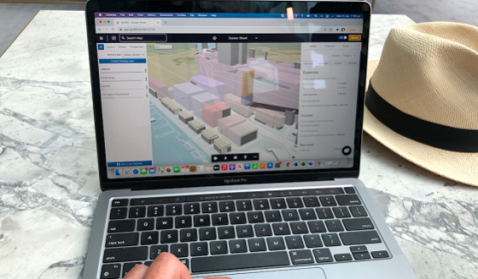Apps to help urban planners and architects reduce construction waste and urban heat are about to be released nationally.
Developed by researchers at the University of NSW’s School of Built Environment, the apps use machine learning and computational design to help minimise the environmental footprint of buildings.
They do this by assisting build environment professionals to make more sustainable decisions around size, scale and materials.
In 2018-19, Australia generated an estimated 27 million tons of waste from the construction and demolition (C&D) sector – 44 percent of the total national waste stream. Over the previous 13 years C&D waste grew by 32 percent per capita.
Lead researcher Associate Professor M. Hank Haeusler says the construction industry produces prodigious amounts of waste.
“Ten to 15 percent of all the materials you bring onto a construction site are going straight into the bin,” he said earlier this month.
“It’s wasteful, it’s bad for the environment, and it doesn’t align with the United Nations’ Sustainable Development Goals.”
Additionally, Australian cities are experiencing unprecedented levels of overheating arising from human activity such as waste heat from industry, cars and cooling, building with heat-absorbing materials and rapid urbanisation.
A/Professor Haeusler said machine learning can interrogate vast sets of fine-grain data in real-time to analyse and evaluate alternatives. In a design context, it can identify efficiencies and promote sustainable practices – in this case, reducing the heat and waste produced.
“[Within the UNSW heat reduction app] you design your street and then a computer program does the calculation in the background [based on intelligence learned from its data sets. Then it tells you what] it looks like here, at this intersection, [and if] it will get hot because of the physics that shape urban heat islands.”
The designer can then adjust the building height, put in green spaces and shade, change the road width and adjust other variables to improve the building’s environmental footprint.
The tools will appear at app stores in the near future.



